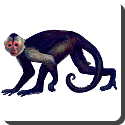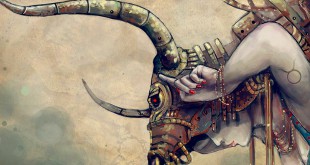 Capuchin — The capuchins are the group of New World monkeys classified as genus Cebus. Their name comes from their coloration, which resembles the cowls worn by the Franciscan Capuchin order of Catholic friars. Cebus is the only genus in subfamily Cebinae.
Capuchin — The capuchins are the group of New World monkeys classified as genus Cebus. Their name comes from their coloration, which resembles the cowls worn by the Franciscan Capuchin order of Catholic friars. Cebus is the only genus in subfamily Cebinae.
The range of the capuchin monkeys includes Central America (Honduras) and middle South America (middle Brazil, eastern Peru, Paraguay).
Capuchins generally resemble the friars of their namesake. Their body, arms, legs and tail are all darkly (black or brown) colored, while the face, throat and chest are white colored, and their head has a black cap. They reach a length of 30 to 56 cm (12 – 22 inches), with tails that are just as long as the body. They weigh up to 1.3 kg (2 lb, 13 oz), with brains of mass 35-40g. They are considered the most intelligent New World monkeys.
Like most New World monkeys, capuchins are diurnal and arboreal. With the exception of a midday nap, they spend their entire day searching for food. At night they sleep in the trees, wedged between branches. They are undemanding regarding their habitat and can thus be found in many differing areas. Among the natural enemies of the capuchins are large falcons, cats and snakes.
The diet of the capuchins is more varied than other monkeys in the family Cebidae. They are omnivores, eating not only fruits, nuts, seeds and buds, but also insects, spiders, bird eggs and small vertebrates. Capuchins living near water will also eat crabs and shellfish by cracking their shells with stones.
Easily recognized as the “organ grinder” monkeys, capuchins are sometimes kept as exotic pets. They are also sometimes used as service animals. Sometimes they plunder fields and crops and are seen as troublesome by nearby human populations. In some regions they have become rare due to the destruction of their habitat.
 Kids Portal For Parents India Kids Network
Kids Portal For Parents India Kids Network






